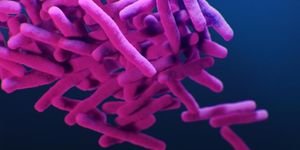New Tool for Detecting Counterfeit Pharmaceuticals
Counterfeit drugs have always been a problem; in fact, it’s estimated that nearly 10% of global pharmaceutical sales involve the circulation of fake drugs.
The emergence of online pharmacies, in particular, have led to an increase in counterfeit drugs circulating in the market. People may find an online pharmacy more convenient and efficient for getting medications, but many of these companies operate illegally. Many of the medications they sell are either fake or less pure than regulated substances (e.g., they may contain impurities that are not healthy for humans).
Pharmaceutical companies have various ways of preserving the integrity of their pharmaceuticals and ensuring real ones are being distributed. This includes features like barcodes that allow people to confirm where the drug comes from. But consumers of these drugs, particularly those shopping online pharmacies, do not have such tools available.
New research published in ACS Central Science outlines an effort to create such a tool for consumers to help detect and avoid counterfeit products: fluorescent silk tags.
The tool in question is made of silk proteins and designed to be applied directly to a pill or added into a liquid medication. Specifically, tags use proteins from silkworms (called fibroins) and an attached colored protein. The colored proteins create a grid-like pattern. Then, researchers worked with an app team to design something that could scan the silk protein pattern in a solution, upload the information to an algorithm, and generate information to a consumer about the drug they are about to take.
Similar tools have been developed in the past, but the materials used to create tracking codes are generally not seen as safe or edible by humans. Silk was chosen as a new material because it is organic, edible, and fairly safe. In fact, researchers tested the silk proteins in gastrointestinal enzymes and found that the silk was easily digestible by the body.
Sources: Science Daily; ACS Central Science








